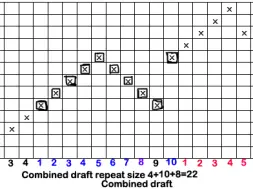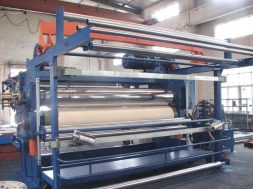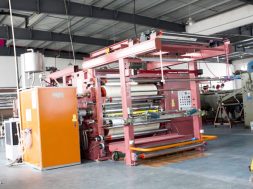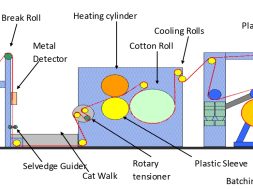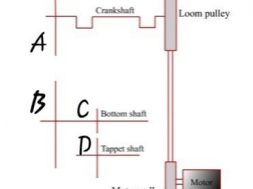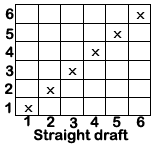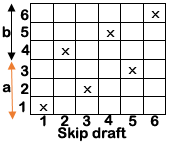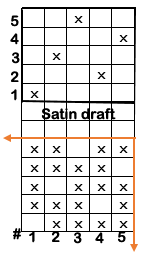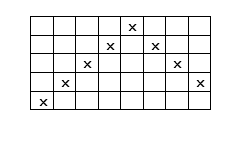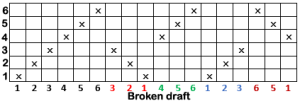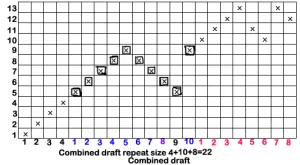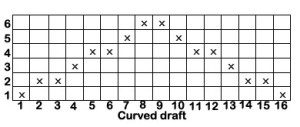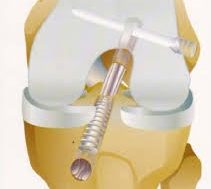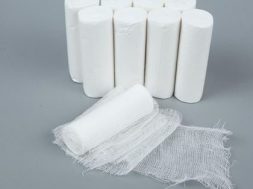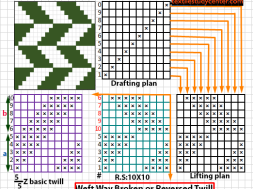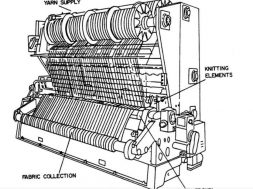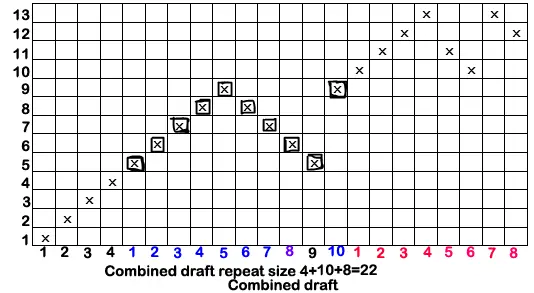
Types of Drafting Plan
Types of Drafting Plan
The various drafts are classified as follows:
❶ Straight draft
❷ Skip draft
❸ Satin draft
❹ Pointed draft
❺ Broken draft
❻ Divided draft
❼ Grouped draft
❽ Combined draft
❾ Curved draft
❶ Straight draft:
This draft is the simplest types of draft where individual warp yarn in a repeat is place in individual heald frame.
Number of helad shaft is equal to the number of warp yarn in the repeat.
Lifting plan is the same as design.
Used in twill and satin design.
❷ Skip draft:
This draft is used in weaving when density of warp threads (EPI) is high.
Number of heald frames may be used twice or multiple of two than the number of warp yarn in a repeat.
This draft reduces the friction between the yarns.
The heald frames are divided into two groups. All even numbered warp threads are drawn through the 1st group of heald frames and all odd numbered warp ends are drawn through the 2nd group of heald frames.
❸ Satin draft:
This draft is largely used for satin weaves.
This draft avoid friction in very densely set warps.
❹ Pointed draft or V-draft:
In this draft system a straight draft is reversed after half the repeat warp way.
This draft is used when the repeat size is too large.
The number of heald shafts is equal to half the number of warp yarn in a repeat size of the weave.
The first and last heald shafts contain two warp ends.
This draft is used to produce fabric with symmetry design. e.g. zig-zag twill, diamond.
❺ Broken draft:
This draft also referred to as herringbone draft.
This draft can be considered as a modified pointed draft.
This is a combination of straight drafts with different directions constrictions.
The reversal of direction is not on the last or the first shaft as in pointed or V-draft.
When the direction is reversed the first thread of the next group is started higher or lower than the thread the thread of proceeding group.
Used for producing herringbone twills, diaper design etc.
❻ Divided draft :
The raft is employed for derived waves, double warp weaves, two ply weaves, pile weaves and some others.
In this draft, the shaft are divided into two or more groups.
A suitable type of draft is chosen for each group.
❼ Grouped draft :
This drafts is used for producing check and stripe fabric.
Two sets of stripes are used in two sets of heald shafts.
The repeat of the draft is determined by the number of stripes and the number of threads in each stripe.
The number of shafts in the draft depends upon the number of stripes and the warp repeat of weave of each stripe.
❽ Combined draft :
Various methods of drawing in can be combined in one draft for producing a certain type of fabric
Two or more drafts described above can be applied simultaneously, for example, straight and skip or sateen, grouped and curved, and so on.
It is a very complicated types of draft.
It can be chosen if there are some technological or economical reasons.
The designer having a great experience can do it properly.
❾ Curved draft :
This draft is applied for fancy weave with large warp repeat unit.
Used to reduce the no. of heald shafts.
Curved drafts are irregular and cannot be classified.
The minimal number of heald shaft equals the numbers of threads in warp repeat with different order of interlacing.
The drawing in is done applying the rule: aIl warp threads which works alike are drawn on the same heald shaft.
(10770)

